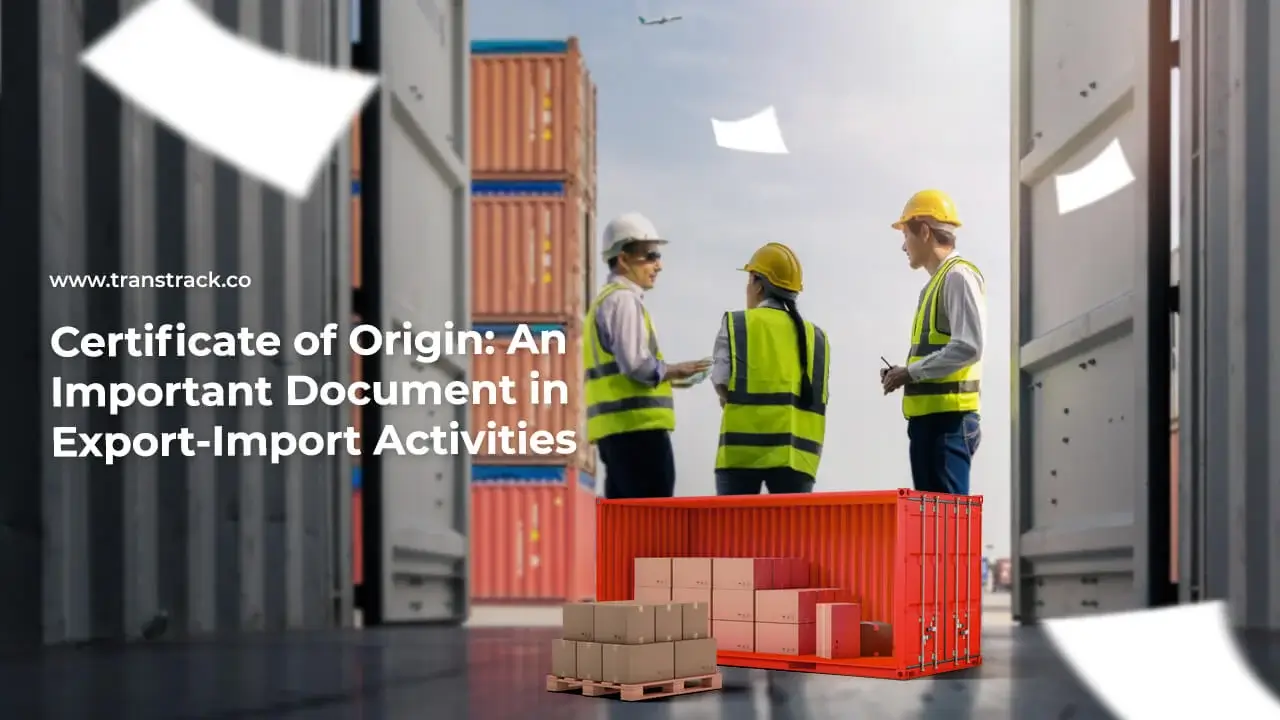Here are the Export Import Documents Required to Conduct International Trade Transactions!

International trade is one of the main pillars of the global economy, allowing countries to interact with each other and exchange goods and services. However, behind every international trade transaction, there are a series of documents that are crucial to ensure the smoothness and legitimacy of the process.
In this process, export-import documents play a crucial role to ensure that every transaction is carried out legally and efficiently. Therefore, an understanding of export-import documents must be mastered by business people so that they do not experience problems in the future.
For those who are still unfamiliar with the export and import of goods, you are in the right place. This article TransTRACK will provide an understanding of the various export and import documents and their functions. By understanding these documents, it is hoped that business people can carry out international trade transactions easily and smoothly.
Types of Import-Export Documents
Import-export documents themselves consist of various types and have their respective functions. Without a good understanding, business people will be confused and the transaction process will experience many obstacles. Import and export documents are broadly divided into two groups, namely main documents and supporting documents. For more details, here is a complete description:
Key Export Import Documents
The main export-import documents are a very important foundation to ensure the success and validity of each transaction. These types of documents include key information related to the goods or services being traded, including:
Invoices
An invoice is a document that records the details of a trade transaction, including information about the goods or services traded, the price, quantity, and total value. Invoices are the basis for determining the price of goods or services traded. In addition, the customs also uses information from the invoice to calculate the import duty charged.
Packing List
Packing list is a document that contains detailed information about the packaging and weight of the goods being shipped. This document helps customs to identify and inspect the goods more easily. Customs uses the packing list to check the match between the information listed and the actual goods.
Bill of Lading (B/L)
Bill of Lading (B/L) is a document that records the ownership or shipment of goods. The B/L is required to claim the goods at the port of destination and becomes the basis for payment by the buyer. The Bill of Lading document is also used as proof that the goods have been shipped.
Air Waybill (AWB)
An Air Waybill (AWB) is a transportation document for air shipments. This document includes information about the consignee, the type of goods, and the delivery route required by the airline. The AWB also acts as proof that the goods were sent by air shipment.
Shipping Instruction
Shipping Instruction is the instructions given by the exporter to the shipping company or cargo agent to arrange the shipment of goods. This document includes information on shipment details, method of transportation, and other special instructions. It ensures that the carrier has the necessary information to manage the shipment efficiently.
PEB (Pemberitahuan Ekspor Barang)
PEB or Pemberitahuan Ekspor Barang is a document issued by the customs after the export process is complete. This document contains information about the exported goods and is proof that the exporter has fulfilled tax and customs obligations.
Export Import Supporting Documents
In addition to the main documents, there are also additional documents that support the smooth import-export process. These documents are usually only required in accordance with regulations in certain countries. Here are the details:
Certificate of Origin
This document indicates the country of origin of the goods being traded. The Certificate of Origin can affect the amount of import duty levied on the goods. CoO Proves that the goods originated in a particular country in accordance with the requirements of trade regulations.
Certificate of Insurance (COI)
A COI certifies that insurance has been purchased and provides details on the amount of coverage as well as the risks covered. Insurance documents are used to provide protection against the risk of damage or loss of goods during the shipping process. This includes various types of insurance, such as cargo insurance, liability insurance, and others.
Phytosanitary Certificate
This document is required to ensure that the imported or exported goods are safe, free from pests, diseases, or other contaminants that may harm human, animal, or plant health.
Certificate of Analysis (COA)
A Certificate of Analysis (COA) is a document that provides detailed information about the quality and characteristics of a product. This document is often required for certain goods, such as chemicals, pharmaceuticals, or food products. COA is often a special requirement for certain products and can be a deciding factor in purchasing decisions.
With a good understanding of import and export documents, businesses can capitalize on international trade opportunities to support growth and expansion. The process does require special attention to detail, but the long-term benefits can be key to a company’s success in the global market.
To facilitate the import-export process, utilizing the latest technology is an effective solution. By using technology that is integrated with logistics systems, companies can optimize supply chains and ensure smooth management of export-import documents. TransTRACK Logistic Service Integrator is one example of a service that can help simplify the process.
The application of Logistic Service Integrator technology has brought a revolution in the management of import-export documents, providing integrated solutions to improve efficiency and accuracy throughout the global supply chain. By using a sophisticated automation system, Logistic Service Integrator enables companies to manage, track, and organize the necessary documents more quickly and efficiently.
Thus, the implementation of Logistic Service Integrator not only helps reduce administrative burdens, but also increases accuracy, speed, and reliability in the entire import-export process, thus making a significant contribution to improving the competitiveness and operational performance of the company.
Topic





